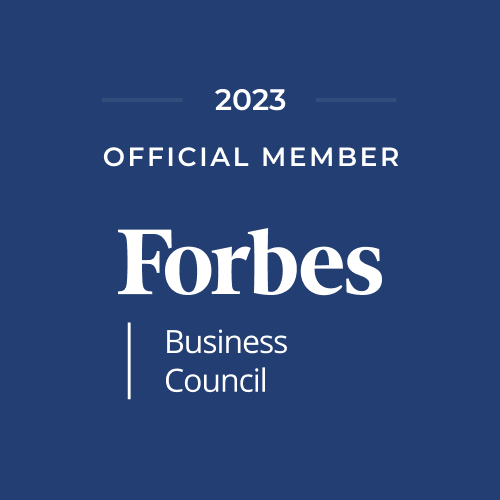Bookmarks: 5 Interesting Articles That May Help You This Week
/Each week, I select a few articles that rise above the fray and hopefully help you on your journey in the CRE world. They pull from one of four "corners:" corporate real estate, technology, management science and anything positive. I welcome your comments on these articles.
1. If You Can Manage a Waffle House, You Can Manage Anything
Steve Allen/Alamy
To be clear, nobody (including my friend Bill) is arguing that all 1,950 Waffle Houses are shipshape operations. The company’s unscientific 3.3 employee rating on Glassdoor beats rivals like Denny’s and IHOP but trails McDonald’s. Worker reviews often contain gripes about long hours, chronic absenteeism, grueling holiday shifts, endless $8 checks and drunk and belligerent customers. “You will find grits in everything you wear,” says one. “Sometimes bacon grease makes the floors slippery,” says another.
There are also darker allegations involving employee theft, drug abuse, racism and sexual harassment. “Don’t be surprised if you find out your cook didn’t show up because he was in jail,” one reviewer said.
A Waffle House spokesman says the company has robust systems to support employees and enforce policies. But with more than 40,000 associates and millions of customers, “no system is perfect.”
It’s difficult to imagine how Waffle House attracts good managers—let alone operates a viable business. But the fascinating thing is that somehow, it does. The company declined to disclose its financials, but most estimates of its annual revenue exceed $1 billion. Waffle House says the share price of its employee-owned stock, which is based on its audited book value, has increased every year for the last 57. The company says it typically opens about 50 new restaurants a year.
2. How is Flexspace Changing US Corporate Culture For Property Decision-Makers
International Workplace Group
With the corporate US real-estate industry in flux and the concept of flexible working increasing demand for flexible office space (flexspace) across the nation, one of its biggest providers – International Workplace Group (IWG) – took part in three high-profile events throughout the country this October. IWG’s multi-brand approach is deliberately broad to account for all manner of business needs, including established brand Regus and design-driven new offering SPACES.
In Miami, the sixth annual Real Deal Real Estate Showcase + Forum was held on 17 October at Mana Wynwood. With over 3,500 attendees, 20 panellists and 70 industries represented, this one-day conference took a holistic view of corporate US real estate by covering it from every angle. With investors, buyers, brokers, financiers and developers all converging for a full day of networking and deal-making, this year’s event is where tomorrow’s trends were not only talked about but also set in motion.
Past topics have focused on themes including “Looking at the shifting strategies of commercial brokers and brokerages amid a slower market” – and it’s ideas like this that will certainly bear relevance as we shift to a more flexible job market and a more flexible approach to the manner and place of work. With over 6,000 delegates in attendance to experience the new projects, products and services in corporate real-estate on show, this was a not-to-be-missed affair for anyone in the South Florida area.
3. Molson Coors to Move Corporate Headquarters to Chicago
CoStar
Chicago is set to become the corporate headquarters of Molson Coors Brewing Co. when the beer giant, facing “challenging industry dynamics,” relocates from Denver as part of a sweeping overhaul that includes expanding beyond ale products.
The maker of Coors Light and Blue Moon beers said it is “simplifying its structure” in a move to unlock $150 million in savings. As a result, the company is streamlining its corporate center and four business units into two concentrations: North America and Europe. It also plans to slash as many as 500 positions in the United States and Canada.
It’s all part of a larger plan to make the company more nimble as it branches into other products, both with alcohol and without, as consumer drinking habits shift and consumption of alcohol in general declines. For the third quarter, Molson Coors reported that revenues tumbled 3.2% and are forecast to fall to low-single digits in the next quarter.
4. Following Google and Facebook, Apple Commits $2.5B To Housing
Apple
Apple has one-upped the billion-dollar housing pledges made by fellow Silicon Valley tech giants Google and Facebook earlier this year.
Cupertino's trillion-dollar tech company has dedicated $2.5B to addressing California's housing crisis, the company announced on Monday. Apple is actively looking for developers for the project.
The commitment comes through several channels, but most will go toward affordable housing construction and financing for first-time homebuyers.
“Affordable housing means stability and dignity, opportunity and pride," Apple CEO Tim Cook said in a statement. "When these things fall out of reach for too many, we know the course we are on is unsustainable, and Apple is committed to being part of the solution.”
5. CRE Perspectives on CoWorking
Cushman & Wakefield partnered with CoreNet Global to survey global commercial real estate (CRE) executives. The report reveals corporate perceptions of the value of flexible workspace and coworking strategies.
Some key findings include:
Nearly two-thirds of companies utilize coworking to some degree, and many respondents expect to double their commitment to coworking over the next five years.
One-third of companies using flexible space report occupancy cost savings of more than 5 percent.
Despite an overall positive view of coworking, CRE executives are realistic about the challenges for the workforce.
Additional findings include general perceptions of coworking, current usage, expected impacts on cost, and past and future employee utilization of flexible office spaces.
Your success blesses others. I wish you a great a hugely impactful week!












































































![Slack [Photo: Garrett Rowland/courtesy O+A]](https://images.squarespace-cdn.com/content/v1/5d07e63c75220c000118cbce/1563557721267-KIFPGXTGN0TVTGWJN9M0/offices.JPG)


















